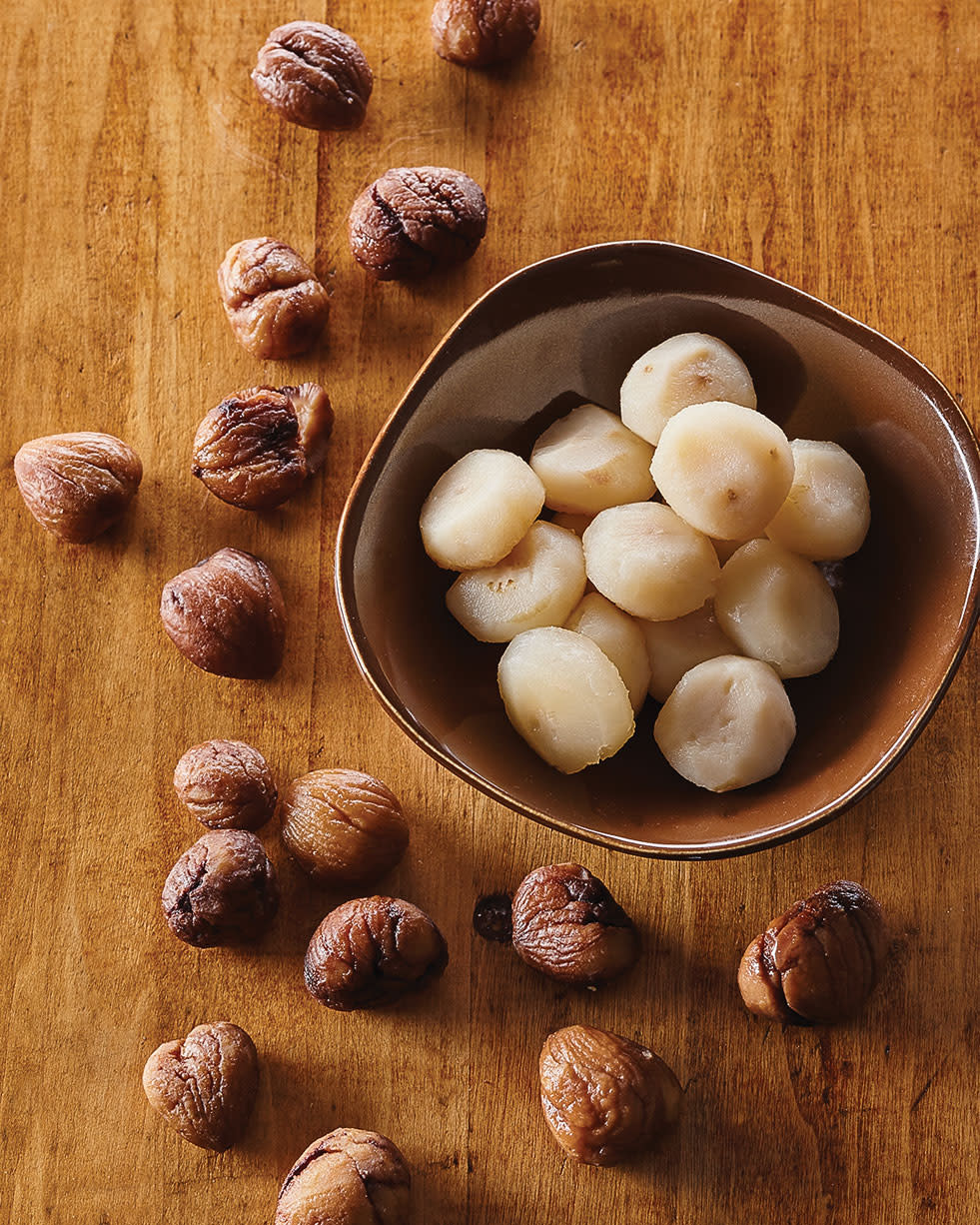Chestnuts vs Water Chestnuts
Can water chestnuts be used as a substitute for chestntuts?

Though they share a name, and have some similarities, chestnuts and water chestnuts are not related and can't serve as substitutes for each other.
Chestnuts (also known as tree chestnuts) grow on chestnut trees, and are common throughout Europe, Asia, and the United States. The nuts are encased in spiky porcupine-like capsules, containing 2–7 nuts, each wrapped in its own shell. Raw chestnuts don’t taste good, but once roasted or boiled in their shells, the nuts become sweet and edible.
Water chestnuts, on the other hand, aren’t nuts but “corms.” Indigenous to Southeast Asia, like rice, they thrive in wet, marshy fields, but like potatoes, they grow underground. Their brown skins look similar to the skins on (tree) chestnuts, but once peeled, water chestnuts are vastly different. They have a crisp, apple-like texture, while tree chestnuts are starchier and “meatier.”
Both are available canned or jarred, but fresh can be harder to find.
Product Recommendations
Interested in cooking? Need some supplies?
Check out some of the tools we like. All products featured on Cuisine at Home are independently selected by our editors; we may earn an affiliate commission from qualifying purchases through our links.